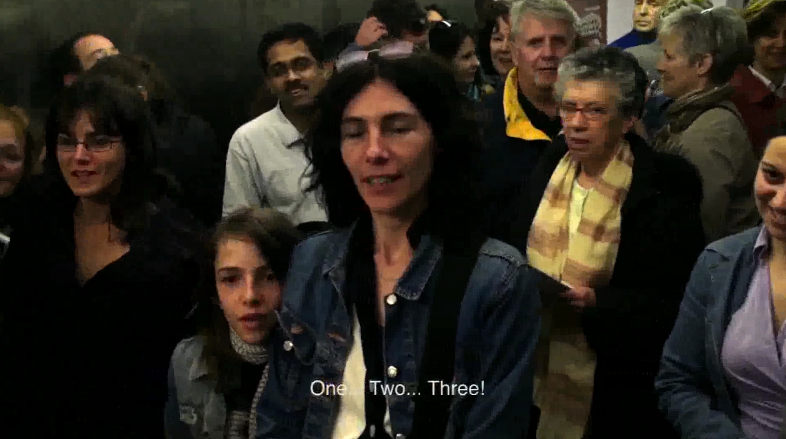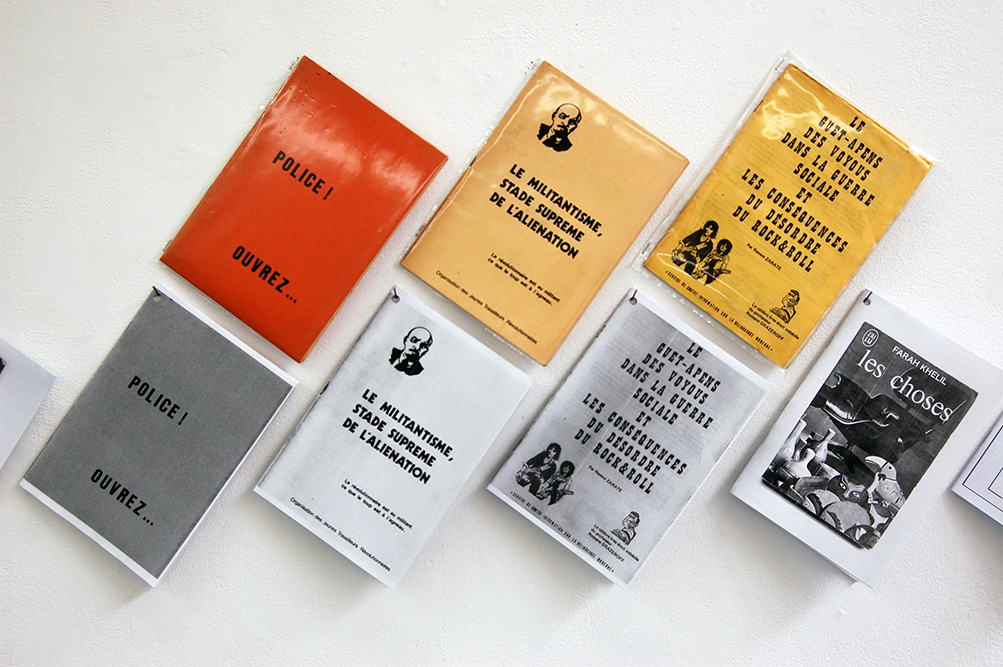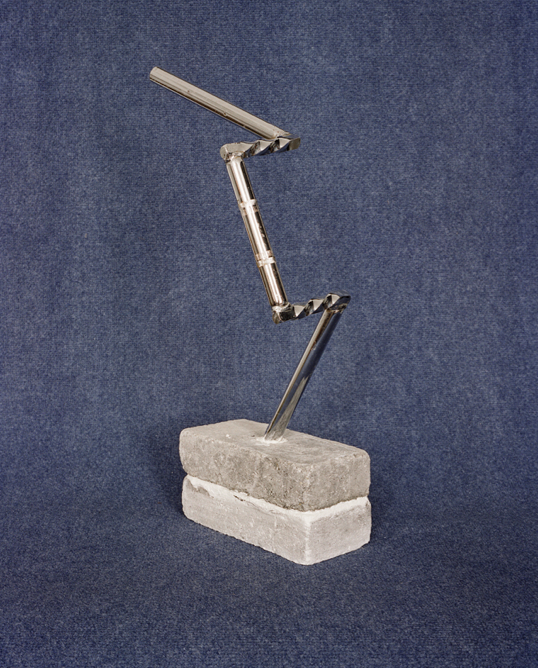Waste
In most of the dystopian films of 60s and 70s, machines were taking over the world, repressing human beings. Now we are in the so-called (post)digital era, surrounded by gadgets. I remember, as a kid in the 90s, it was thrilling to think about having a cable phone with a screen. Two days ago, throwing charger cables of two different cell phones to the trash was inevitable. Besides the cables, there are abandoned hard disks, usable but old monitors, layers of information spread into the unknown – I mean the immaterial ones, such as files, mails, words written and all those papers waiting to be scrolled down… The digital waste is flying in a black hole.
The second Art Hack Day in Berlin took place in HKW on 27-29 January in collaboration between transmediale 2014, Art Hack Day and LEAP. Influenced by this year’s theme afterglow hackers were challenged to create in 48 hours. How does the post-digital world affect our lives, especially, how to use its outcomes, such as material and immaterial waste? One may ask if we really are in the era of post-digital. Is it dystopia? On the contrary, as one of the organizers Olaf Mathé pointed out it can be utopic if one uses this waste appropriately. How one’s trash may turn into other’s treasure?
If one dedicates herself/himself to this challenge of 48 hours, to work with duration, chaos is inevitable, however the attraction is hidden in that provocation. The theme is vigorous, contains potential. Unfortunately some of the works were hiding behind this poetic concept, playing with magical words rather than creating appealing works.
Back to Sender by Dani Ploeger and Jelili Atiku stresses the politic side of the topic. Europe has been sending its material digital waste to Africa, nevertheless it is illegal to bring back those used cables, keyboards, etc. In the video, installed in a luggage full of trash the artists brought, we see Ploeger and Atiku digging the waste in Nigeria. Apparently, Europe knows hot to get the treasure whilst sending the trash outside of its borders! By using a hard-disk, traveled from Nigeria as well, Bengt Sjölén and Nicklas Marelius created Data Retention – Resurrection. The information extracted from the hard-disk, “former-life” of the dead material was shown on the screen, layer by layer.
Dennis de Bel’s humorous handmade work SMS: Smoke Messaging Service goes back to the origins of communication. One presses the button and the smoke comes from the small container assembled to a white iPhone. The camera of iPhone is on, allowing us to see the smoke signals through the screen. Instead of using the phone smoke conveys the message. Recalling basic systems, the artist prompts us to use alternative ways in a situation when nothing works.
Another work engaging with black humour was Jobless Avatars/ The real curriculum by Saso Sedlacek. Fired avatars were looking for jobs, narrating their stories, asking questions: ”Why do we work anyway?” “I need this job, even a loser job like this.” Meanwhile, I started to get messages constantly, maybe like 15, saying: “Welcome to your new NSA partner network IMSI:262075260601734” “Device Has Cooperated. We Thank It.” “Atlantic Upload Complete”. It was impossible to call; the network was not functioning. Daniil Vassiliev and Julian Oliver hacked the cell phones and blocked the communication near the exhibition space. Unfortunately, the rad work on the frenzy, PRISM: The Beacon Frame were ceased to operate because of simulating NSA PRISM (National Security Agency data mining program). Everyday, how power systems work to subdue is becoming more and more problematic. Artists, in their declaration due to the threat of being reported to German Federal Police, explain their deliberateness.
“It was our intention to provide an opportunity for public to critically engage precisely the same methods of cellular communications interception used by certain governments against their own people and people in sovereign states. It was not, in any way, our intention to harm anyone and nor did we… It is vital that technology-based art remain a frame with which we can develop critical discourses about the world we live in, from the engineered to the cultural and political.”
Despite the diligent labour, the exhibition in general couldn’t whet my appetite. Putting a phone in honey(pot) as a reference to the computing term “honeypot” did not seem like a fulfilling idea. Asking the visitors to read a captcha in order to understand if they are human or a machine, then stamping this captcha on the bodies of the visitors was not innovative at all. The idea of hacking, in general, is electrifying, therefore not using the hazard is sad. Nevertheless, how Art Hack Day was organized in such a short span of time was compelling. Organizers were disciplined hard-workers. Besides that use of the space, small exhibition catalogue and the talks generated caught attention in a fine manner. No need to mention, how cool the hackers looked whilst ‘playing’ with all those small components of electronic devices.
* Special thanks to LEAP for providing us images.
Images:
Dani Ploeger and Jelili Atiku, Back to Sender
Bengt Sjölén and Nicklas Marelius, Data Retention – Resurrection
Dennis de Bel, SMS: Smoke Messaging Service
General view













